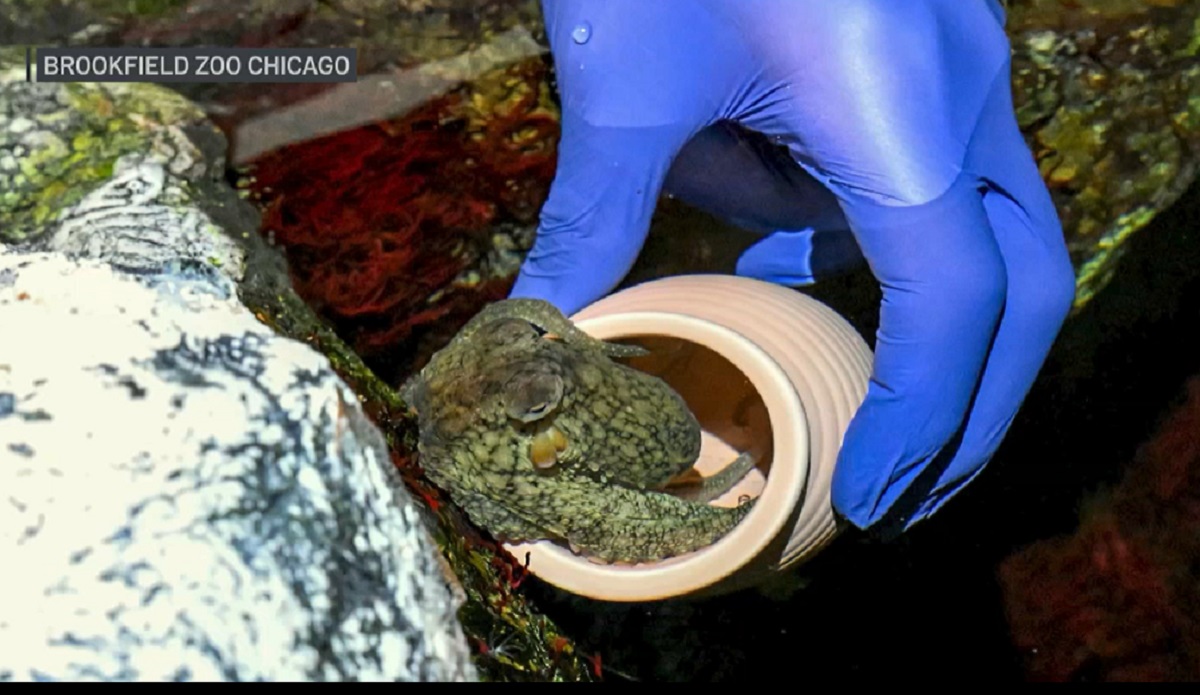As cases of the Powassan virus begin being reported in the U.S., including even one recent death, many are wondering what the virus is and how can they prevent it.
The tickborne illness is responsible for at least one death in Maine so far this spring, officials with the Centers for Disease Control and Prevention said.
And though experts say cases are rare, they also urge anyone in states where certain ticks are found, including in Illinois, to monitor for signs and take precautions.
Here's what you should know:
What is Powassan virus and how do you get it?
Humans become infected with Powassan through the bite of an infected deer or woodchuck tick.
The rare disease is often severe and can lead to infections of the brain or spinal cord, according to the CDC.
Local
How common is the virus?
Cases of the virus are rare in the United States, with about 25 cases reported each year since 2015.
Feeling out of the loop? We'll catch you up on the Chicago news you need to know. Sign up for the weekly Chicago Catch-Up newsletter.
So far this year, one death has already been reported.
The Maine CDC confirmed Thursday someone in Sagadahoc County had died of the virus.
"The adult developed neurologic symptoms and died while in the hospital after becoming infected, likely in Maine," the state reported. "This is the first case of the tickborne illness identified in the state this year."
According to the CDC, no cases have been reported in Illinois between the years of 2011 and 2020, but several have been reported in surrounding Midwest states.
In Wisconsin, 30 cases were reported in that same time frame. Another 31 were reported in Minnesota and just one in Indiana.
Where is the virus found?
Powassan virus infections have been reported in the United States, Canada, and Russia, according to the CDC.
In the U.S., cases are most often seen in the Northeast and the Great Lakes regions, particularly in the late spring, early summer and mid-fall time frames.
Deer ticks, also known as black-legged ticks, can be found in Illinois as the Great Lakes Region is one of the most common locations for the species.
The Illinois Department of Public Health reports that the species has been found "sporadically" in several Illinois counties, but in recent years it has been common only in certain counties, particularly in northern Illinois.
What are the symptoms of the Powassan virus?
Symptoms of Powassan virus infection usually start one week to one month after the tick bite. People who get sick may have fever, headache, vomiting, weakness, confusion, seizures, or memory loss, the center said.
Some people may experience serious neurologic problems, such as brain or spinal cord inflammation. Severe infection may result in death. Many people infected with Powassan virus do not get sick, however.
How can you prevent it and what else should you know about ticks?
Illinois officials issued a reminder earlier this month, noting that May is Lyme Disease Prevention Month.
“We encourage everyone who enjoys spending time outdoors to get educated about how to protect themselves from tickborne illnesses. Please review our many IDPH resources and join us as we all work together to Fight the Bite," IDPH Director Dr. Sameer Vohra said in a statement.
Ticks live in and near wooded areas, tall grass and brush, experts say, and they can carry Lyme and other debilitating and sometimes fatal illnesses such as Rocky Mountain Spotted Fever, Tularemia, Ehrlichiosis, and Babesiosis.
"If you become ill with fever and/or rash after being in an area where ticks may have been, contact your health care provider," IDPH said in its release. "Some tick-borne illnesses can be life-threatening." For example, if untreated Rocky Mountain Spotted Fever may cause death as quickly as five days after symptom onset."
Here are some precautions officials advise to prevent tick bites:
- Walk in the center of trails. Avoid wooded, brushy areas with high grass and leaf litter.
- Wear light-colored clothing to make ticks easier to find. Tuck long pants into socks and boots.
- Apply an EPA-registered insect repellent containing 20% DEET, picaridin, IR3535, or Oil of Lemon Eucalyptus according to label directions.
- Treat clothing and gear with products containing 0.5% permethrin. Permethrin can be used to treat boots, clothing and camping gear and remain protective through several washings
- Conduct full-body tick checks on family members (underarms, ears, belly button, behind knees, between legs, waist, hair and scalp) every two to three hours. Also check any gear or pets taken on outings.
- Put your clothes in the dryer on high for 10 minutes (or one hour for damp clothes) to kill ticks.
- Shower within two hours after coming indoors.
If you are bitten by a tick, promptly and properly remove it:
- Using fine-tipped tweezers, grasp the tick near the skin and pull upward with slow, even pressure. Do NOT twist or jerk.
- Do NOT burn the tick or smother it with oils or petroleum jelly, as this may cause the tick to spit up infected saliva into your skin.
- Once the tick is removed, disinfect the bite area and wash hands with soap and water.
- Make a note of the date you were bitten in case you need medical care later.
Removing ticks within 24 hours reduces the risk of disease. Instructions for tick removal and awareness of symptoms are available on the IDPH website.
Tick populations in your area can be monitored on the IDPH Tick Surveillance Mapping App.



